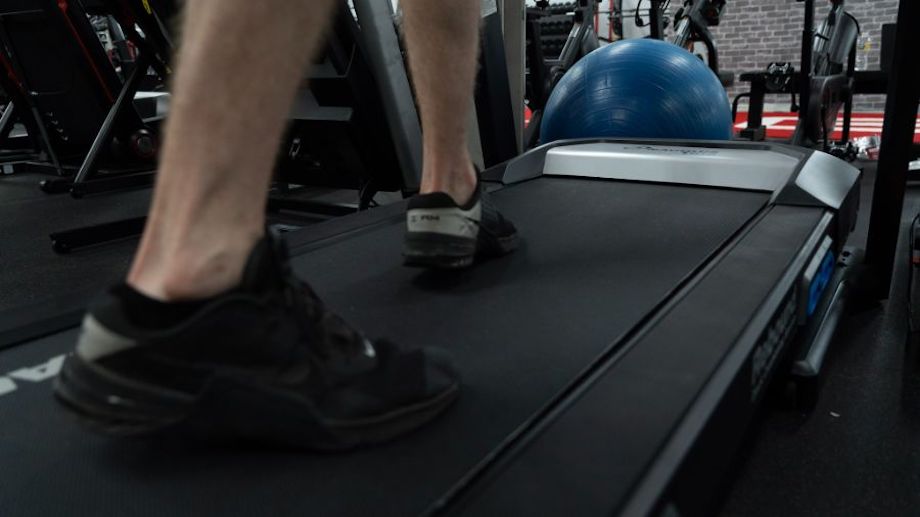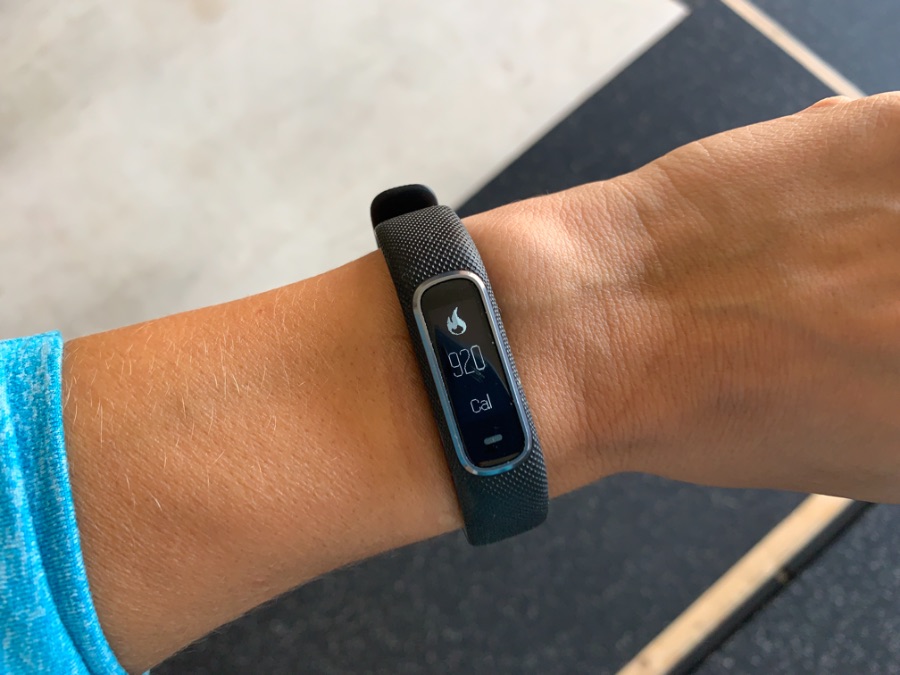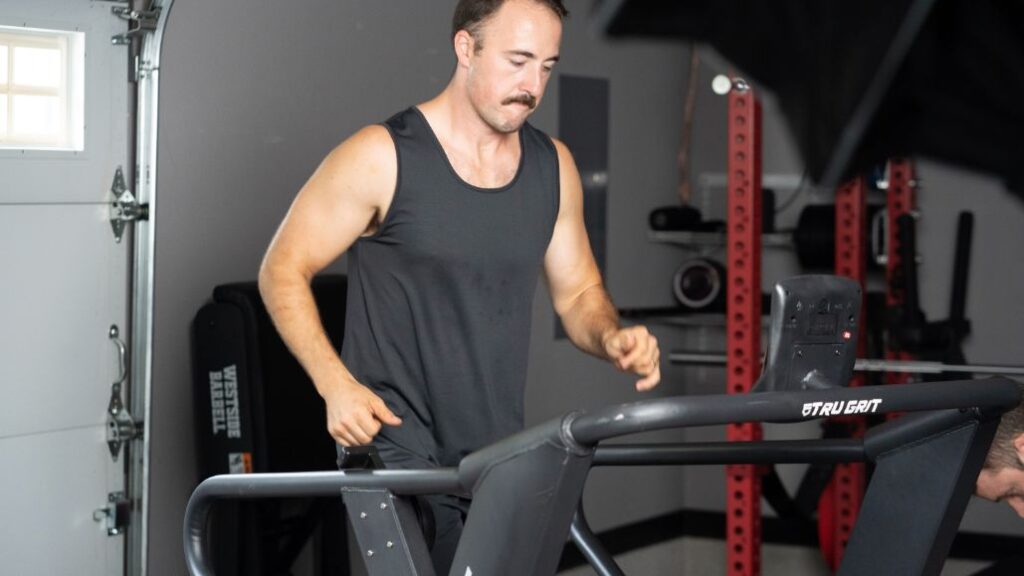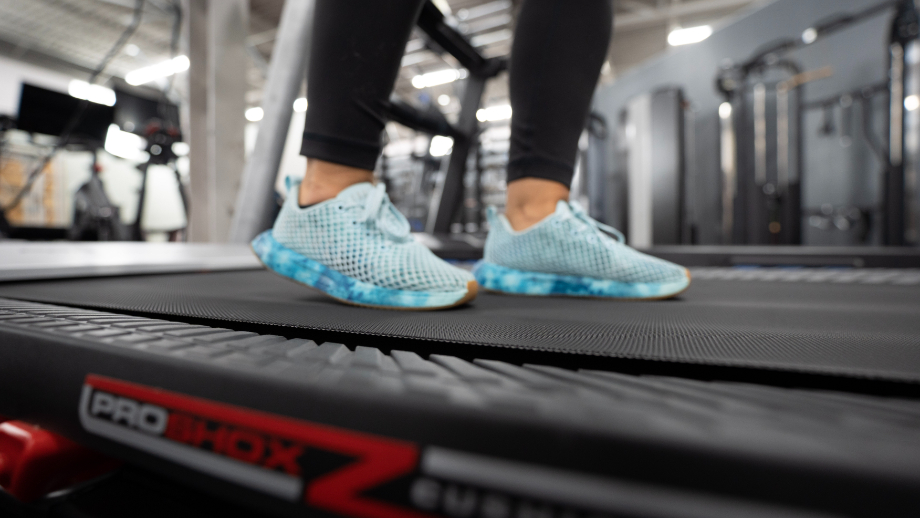We test and review fitness products based on an independent, multi-point methodology. If you use our links to purchase something, we may earn a commission. Read our disclosures.
Cardio is a dirty word in some gym circles, but it shouldn’t be. It’s often thought it will destroy your muscle gains, but this couldn’t be further from the truth. Most forms of cardio will enhance your recovery between sessions and save you from the world’s biggest killer, heart disease.
There’s one form of physical activity that is often overlooked but is loaded with benefits. Do you know what it is?
Walking! And Dr. Luis Javier Peña-Hernández, a lung health specialist and a fellow of the American College of Chest Physicians, agrees with me.
“Some people think they need to be completely breathless to get in a good workout, and that simply isn’t true,” Dr. Peña-Hernández says. “While high-intensity exercise is fantastic, you can also improve your overall health by taking brisk walks.”
Now before you strap on some shoes, read this article to get the best out of your walking workouts to improve your fitness level and lower your risk of cardiovascular disease. Is walking the best cardio? Read on and find out.
Medical disclaimer: This article is intended for educational and informational purposes only. It is not a substitute for health or medical advice. For medical advice, contact an appropriate healthcare provider.
What Is Cardio Exercise?
Cardio is short for cardiovascular and refers to any exercise that involves the heart (cardio) and blood vessels (vascular). Both make up the cardiovascular system. Cardio exercise, which is also known as aerobic exercise, is any rhythmic activity that involves the large muscles of the arms and legs, and raises your heart rate.
When you do activity, deoxygenated blood comes back to the heart and picks up oxygen to send back to your working muscles. How efficiently this happens and the intensity of the activity determines how high your heart rate goes. Common examples of cardiovascular exercise are running, biking, rowing, swimming, and walking.
What sets cardio apart from strength training is that cardiovascular exercise is almost entirely reliant on your body’s ability to use oxygen during your training session.

6 Reasons Why Walking Is Great Cardio
If you have two legs, a pair of shoes, and the ability to stand up straight, you can walk. It’s an exercise done by the young and old. Walking is simple, easy, and accessible to almost everybody. Yes, walking burns calories, but that’s not the only reason you should walk. Improving your cardio fitness lowers the risk of one of the biggest killers of the human race: heart disease.
Here are six more.
1. Low-impact
High-impact and high-intensity activities like running are great but are not for everybody, especially those with joint and muscle issues. But with walking, this is not an issue because you’re only applying little force to the ground and therefore little impact through your joints. But don’t take my word for it; Dr. Luis Javier again:
“Walking is an excellent, low-impact form of cardio exercise that has proven health benefits for people of all ages,” he says.
2. Reduces Heart Disease
Walking and most other forms of exercise raise good cholesterol (HDL), which improves blood circulation and reduces the chances of your arteries getting blocked. This meta-analysis study backs this up. They found people who walked for 30 minutes five days a week reduced their chance of getting heart disease by 19%. Walking your way to good heart health is entirely possible, Dr. Peña-Hernández says
“You can lower your risk for cardiovascular disease by walking at least 10 minutes a day,” he notes.
3. Boost Energy and Your Mood
The physical benefits of walking are often discussed but mental benefits are at times forgotten. You’re so focused on the physical aspects of cardio that other benefits are often left in the dust. However, cardiovascular activities like power walking have been shown to reduce anxiety and depression. This is thought to be caused by an exercise-induced increase in blood flow to the brain.
Following on from this, walking can improve mental health by reducing anxiety, depression, and negative moods and helps improve self-esteem.

4. Burns Calories
Two things determine the amount of calories that walking burns: the distance walked and how much you weigh. The heavier you are, the more calories that will be burned. Speed is less important here. According to data from Harvard that looked at calories burned walking 3.5 MPH for 30 minutes, a 185-pound person will burn 157 calories, with a 125-pound person burns around 107 calories. Although it doesn’t sound like a lot, it all counts and will aid with your weight loss.
5. May Boost Immunity and Help You Live Longer
Our immune system is a complex network, and only a few immune cells circulate around the body at one time. And these cells are around the organs like the spleen, where your body can easily kill viruses and bacteria that cause infections and disease. Exercises like walking have been shown to increase blood and lymph flow circulation as your muscles contract and relax. This increases the circulation of immune cells, making them roam the body at a higher rate and higher numbers.
Then exercise recruits these specialized immune cells—like natural killer cells and T cells to find antigens and kill them.
But wait, there is more. This meta-analysis study by the British Journal Of Sports Medicine said walking at a brisk pace (2.5 to 3.5 MPH) was associated with a reduced risk of all cardiovascular diseases and helps you live longer.
6. Clears Your Head
Walking is a contralateral act, which means it is an opposite arm opposite leg movement. This is the basis of all our locomotion, and the act of walking activates the left and right hemispheres of your brain due to this contralateral act. This helps you think clearer and you’ll suffer from less stress. Ever felt better after a walk? Now you know why.
Walking vs Running
Let’s get a few of the major differences out of the way. Walking at 2 to 3.5 MPH is a low- to moderate-intensity exercise, while running or jogging at above 3.5 MPH is a medium- to vigorous-intensity exercise. Moving faster with running has a higher impact on your joints, while walking you’re applying less force to the ground making it a low-impact activity.
This 2016 study found that the impact force of running is much higher than walking, which means there is a lower risk for joint injuries with walking. If you are suffering or recovering from joint pain/injuries or back pain, then walking is your best bet.

Running is a higher-intensity activity, and you’ll burn more calories and maybe more body fat within the same distance and less time than walking. To burn the same amount of calories from walking, you’ll need to walk further than you run. If time is an issue and your joints are healthy, then running, if you enjoy it, is a better bet.
But that’s where the difference end. Both walking and running provide similar health benefits. This study published by the American Heart Association suggested that both walking and running reduced the risks of high cholesterol, high blood pressure, and type 2 diabetes regardless of intensity.
Walking versus running is a matter of time, goals, preference, and the health of your joints. Doing both is great but choosing one over the other is fine too.
How to Walk for Cardio Exercise Effectively
Before any exercise, a warm-up is recommended, especially if any joint or heart issues are present. A few minutes of warming up lubricates the joints which get your muscles and joints ready for action. A few simple moves like leg swings, bodyweight squats, hamstring and hip stretches, and arm circles work well.
When you’re walking specifically for cardio benefits, a heart rate between 50 and 85% of your max heart rate rate is recommended. To determine your max heart rate, subtract your age from 220. For example, for a 35-year-old, 220 minus 35 is 185. Then multiply this by 0.5 (50%) and 0.85 (85%) to get the heart range needed for your walking cardio workout.
185 X 0.50 = 93 BPM
185 X 0.85 = 157 BPM
If you have a fitness tracker, it’s easy to keep track of your heart rate. But if you don’t, the talk test will do. If you’re able to carry on a conversation with a friend while walking, you’re keeping your exercise aerobic and around the correct intensity. If you’re unable to string a few words without gasping for air, then your intensity is high, and you need to take a break or slow it down to get back into an aerobic state. That is, in essence, the talk test.
How often and how long you walk is up to you but the AHA and the CDC (Centers for Disease Control and Prevention) recommend getting 150 minutes of moderate-intensity a week to maintain your cardiovascular fitness. You can break this up as you wish as the health benefits will be similar.
Final Thoughts on Walking for Cardio Exercise
Walking is often dismissed and neglected as a cardio workout, but walking is a great cardio workout when utilized correctly. When you keep your heart rate between 50-85% of your heart rate max and walk 150 minutes weekly, you’ll get similar health benefits from walking as from running. Plus,
- Lower impact on your joints
- Easily accessible by the young and old
- Great mental health benefits
- And puts you in a better mood
There is everything to like about walking and nothing to dislike. This is why walking is the best cardio.
FAQs About Is Walking the Best Cardio
How long should I walk for cardio?
This is not a matter of distance but time and intensity. If you are keeping your heart above 50% of your heart rate max and walking a total of 150 minutes a week, this is a great place to start.
Is a 30-minute walk good cardio?
Yes, if your intensity is moderate and you’re walking between 2.0 to 3.5 MPH, a 30-minute walk is a good cardiovascular workout.
Is an hour of walking enough cardio?
For a day yes, it is. For the week, no. It is recommended you get at least 150 minutes per week to meet the AHA guidelines.
Further reading

Looking to start a career in strength and conditioning? Better get certified. Here are our picks for the best strength and conditioning certifications. Read more

If you need more reasons to add a protein supplement to your diet, a certified personal trainer is here to give you the top benefits of protein powder. Read more

Our Peloton Bike+ review looks at whether this bike is truly better than the original Peloton exercise bike. Read more

Mat Fraser is the World's Fittest Man. He also has one sweet home gym setup in the basement of his parent's house. For the size, it's EPIC! Read more

